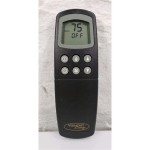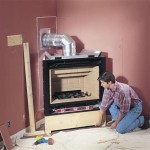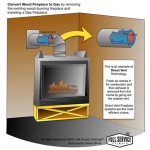```html
Precast Concrete Outdoor Fireplaces: A Comprehensive Guide
Outdoor fireplaces have become increasingly popular, transforming patios and backyards into inviting gathering spaces. Among the various construction materials available, precast concrete stands out as a compelling option due to its durability, design versatility, and ease of installation. This article delves into the world of precast concrete outdoor fireplaces, exploring their benefits, design considerations, installation processes, and maintenance requirements.
Precast concrete refers to concrete that is cast in a reusable mold or "form" in a controlled factory environment and then transported to the construction site for installation. This process offers numerous advantages over traditional cast-in-place concrete, particularly for complex shapes and designs, such as those often found in outdoor fireplaces.
Advantages of Precast Concrete for Outdoor Fireplaces
The selection of precast concrete for an outdoor fireplace offers a multitude of benefits. These advantages relate to cost-effectiveness, design flexibility, and structural performance.
Cost-Effectiveness: While the initial investment may appear comparable to other materials, precast concrete can often prove more cost-effective in the long run. The controlled manufacturing environment minimizes waste and ensures consistent quality, reducing the likelihood of costly errors during installation. Furthermore, the speed of installation significantly reduces labor costs compared to constructing a fireplace from individual bricks or stones.
Design Versatility: Precast concrete can be molded into virtually any shape or size, allowing for a wide range of design possibilities. Manufacturers can create fireplaces that mimic the appearance of natural stone, brick, or even contemporary minimalist designs. This versatility makes it easy to integrate a precast concrete fireplace seamlessly into any existing outdoor landscape.
Durability and Longevity: Concrete is renowned for its strength and resistance to the elements. Precast concrete, manufactured under strict quality control standards, is particularly durable and can withstand harsh weather conditions, including extreme temperatures, rain, and snow. This ensures that the fireplace will remain structurally sound and aesthetically pleasing for many years to come.
Ease of Installation: Precast concrete components are designed for efficient assembly. The modular nature of many precast fireplace kits significantly reduces the time and effort required for installation. In many cases, a professional can install a precast concrete fireplace in a matter of hours, minimizing disruption to the homeowner's outdoor space.
Reduced On-Site Waste: Because the concrete is pre-formed off-site, there is significantly less waste generated during the installation process. This contributes to a more environmentally friendly construction project.
Consistent Quality: The controlled environment of a precast concrete manufacturing facility allows for strict quality control measures. This ensures that each component meets the required specifications for strength, durability, and appearance.
Design Considerations for Precast Concrete Outdoor Fireplaces
Planning the design of a precast concrete outdoor fireplace requires careful consideration of several factors. These factors include the desired aesthetic, the size and layout of the surrounding outdoor space, local building codes, and functional requirements.
Style and Aesthetics: The style of the fireplace should complement the overall design of the outdoor space. Options range from rustic designs that mimic natural stone to sleek, modern designs with clean lines. Consider the existing architectural style of the home and the surrounding landscaping when selecting a style.
Size and Placement: The size of the fireplace should be proportionate to the size of the patio or backyard. A large fireplace in a small space can feel overwhelming, while a small fireplace in a large space may get lost. Carefully consider the placement of the fireplace to maximize its functionality and visual appeal. Factors such as prevailing winds, proximity to seating areas, and views from inside the home should be taken into account.
Fuel Type: Precast concrete fireplaces can be designed for use with wood, natural gas, or propane. Each fuel type has its own advantages and disadvantages. Wood-burning fireplaces offer the classic ambiance of a crackling fire, but require a readily available source of firewood and may be subject to local air quality regulations. Gas-burning fireplaces are more convenient and cleaner-burning, but require a gas line connection.
Building Codes and Regulations: Before installing an outdoor fireplace, it is crucial to check local building codes and regulations. These codes may specify requirements for setbacks from property lines, chimney height, and fire safety features. Failure to comply with these regulations can result in fines or the need to remove the fireplace.
Functional Features: Consider incorporating functional features into the fireplace design, such as built-in seating, storage for firewood, or a cooking surface. These features can enhance the usability and enjoyment of the outdoor space.
Color and Texture: Precast concrete can be pigmented to achieve a wide range of colors and textures. This allows for further customization of the fireplace to match the surrounding landscape and architectural style. Consider using integrally colored concrete for a consistent color throughout the fireplace or applying a stain or sealant to add depth and character.
Installation and Maintenance of Precast Concrete Outdoor Fireplaces
The installation of a precast concrete outdoor fireplace is generally straightforward, but it is essential to follow the manufacturer's instructions carefully. Proper installation ensures the structural integrity and safety of the fireplace.
Foundation Preparation: A solid and level foundation is crucial for the stability of the fireplace. The foundation should be constructed of concrete and should be able to support the weight of the fireplace. Ensure the foundation extends beyond the footprint of the fireplace to provide adequate support.
Assembly: Precast concrete fireplace kits typically come with detailed instructions and diagrams. Follow these instructions carefully to assemble the fireplace components in the correct order. Use a mortar or adhesive specifically designed for concrete to bond the components together. Ensure that all joints are properly sealed to prevent water penetration.
Chimney Installation: The chimney is an essential component of the fireplace, as it allows for proper ventilation and prevents smoke from entering the surrounding area. Ensure that the chimney is properly installed and extends to the required height above the roofline, as specified by local building codes.
Gas Line Connection (if applicable): If the fireplace is designed for gas, it is crucial to have a qualified professional connect the gas line. Improper gas line installation can be dangerous and can lead to leaks or explosions.
Regular Cleaning: Regular cleaning helps to maintain the appearance and performance of the fireplace. Remove ash and debris from the firebox after each use. Clean the exterior of the fireplace with a mild soap and water to remove dirt and stains.
Inspecting for Cracks: Periodically inspect the fireplace for cracks or other signs of damage. Small cracks can be repaired with a concrete patching compound. Larger cracks may indicate a more serious structural problem and should be addressed by a qualified professional.
Sealing and Protecting: Applying a concrete sealant can help to protect the fireplace from moisture and staining. Reapply the sealant as needed, following the manufacturer's instructions.
Winterization: In cold climates, it is important to take steps to winterize the fireplace to protect it from freeze-thaw damage. Remove any accumulated water from the firebox and chimney. Consider covering the fireplace with a waterproof tarp to prevent snow and ice from accumulating on the surface.
By considering these design, installation, and maintenance aspects, homeowners can enjoy the beauty and warmth of a precast concrete outdoor fireplace for many years to come, creating a focal point for outdoor gatherings and enhancing the value of their property.
```
Outdoor Fireplaces

Outdoor Fireplaces

Naturecast Concrete Outdoor Fire Pits Cement Elegance

Outdoor Fires Backyard Fireplace Wellington Bbq Fire Place Kapiti Lower Hutt Inferno

Outdoor Fireplaces Made Of Precast Gfrc Pacific Stone Design Inc Fireplace Patio Backyard Staycation Dream

Outdoor Fireplaces

Farm Show The Best Stories About Made It Myself Inventions Farming And Gardening Tips Time Saving Tricks S Diy Projects On Boosting Your Income

Diy Outdoor Fireplaces Wood Burning Fireplace Kits

Precast Concrete Outdoor Fireplace Kits Interior Paint Color Ideas Check More At Http Www Mtbasics C Stone Fireplaces Fire Pit

Concrete Fire Pits Bowls Landscaping Network








